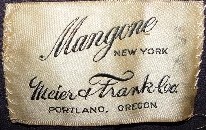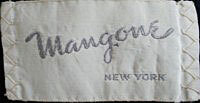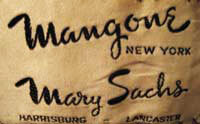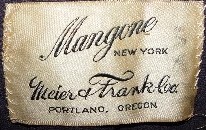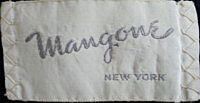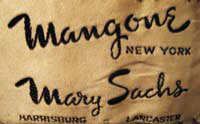Philip Mangone (1884-1957) was born into a family of Italian tailors. His father immigrated into the United States and trained Philip at home, doing piecework that was commonly done by people in their homes. As a teenager Philip went to work in alterations at B. Altman. He then worked for a variety of Seventh Avenue firms, in clothing construction and design. He became an expert in using woolens.
Mangone opened his business, Mangone Models, in 1916. By the 1920s his coats and suits were being sold in over 200 stores nationwide. He continued making woolen garments throughout the 1930s and during WWII he designed the uniform for the WACs.
After the war he continued designing suits, many of which were military inspired. He also opened a blouse business, Greco Blouse Company, which made blouses to coordinate with the Mangone suits. He was not a big follower of the New Look and many of his early 1950s designs continued to have broad shoulders and narrow jackets. He also was known for his novel usage of fur.
Mangone traveled often to Europe to buy fabrics and to view the Paris collections. In 1919, upon his return to the U.S., he was arrested and charged with smuggling. Apparently he bought a jeweled mesh bag in Paris that he had not declared at customs. His biggest travel adventure happened in 1937 when he returned from Europe on the Zeppelin Hindenburg. He was badly burned when the Zeppelin crashed and spent most of the next year recovering in hospitals. The first thing he did when released was to take a flight to Chicago, to prove to himself that he was still not afraid to fly.
Thanks to Nick Mangone, great nephew of Philip Mangone, for providing information
